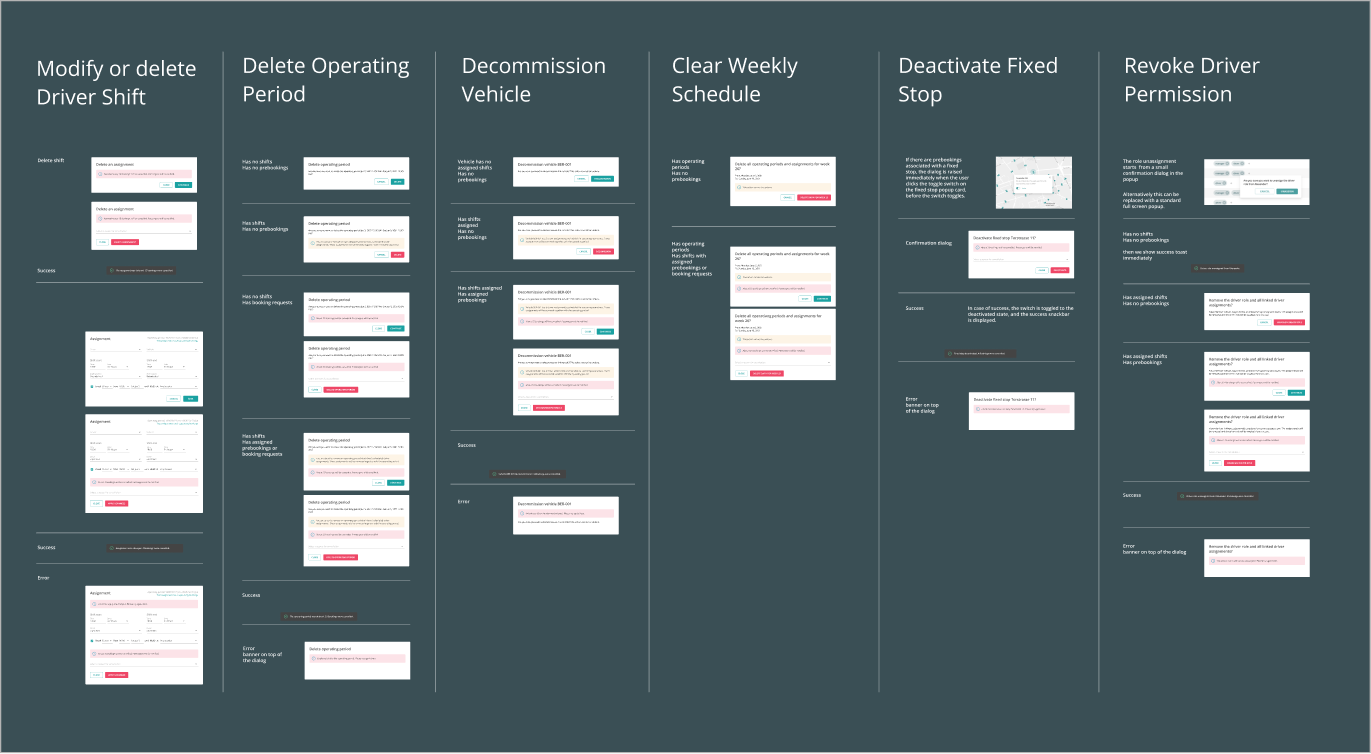Summary
- As a functional design leader, I have conceptualised and delivered a complex feature (spanning across 4 subproducts and 5 different user groups), which effectively enabled the company to run large-scale operations and unlocked new markets.
- I have researched the problem space, collecting insights from customer interviews, live operation observations, passenger surveys, and converted that knowledge into actionable items during ideation workshops and design research.
- Delivered a 3-phased design concept that prioritised pressing problems first and offered strategies for the future.
- Iterated the concept from MVP to a marketable product.
Context
Ability to plan operations was a feature highly demanded by customers (public transit companies): it would allow them to automate operations from the management side. Without planned operations passengers could not pre-book trips, which had strategic importance for scaling the business.

The scheduling was going to add a new dimension — time — to a previously "realtime" system, changing core userflows, and affecting nearly all interfaces of the product.
My task
Enable cross-functional teams in the company from the design side, arriving to a solution that would make scheduling possible, while meeting the requirements, constraints and deadlines.

To coordinate the efforts, a dedicated cross-team task force was established, with me taking the lead from the design side.
Research: scoping the problem
The challenge was to synthesize requirements from various customers, and define a scope that would be technically doable, and strategically aligned.
- What is the root problem that needs to be solved first?
- Which userflows will have to be enabled to deliver a markletable solution?
- Will the impact justify the efforts, and how do we measure it?
The feature was completely new for the product. In collaboration with product and engineering leads, we have collected as much context as possible, and then experimented with different system designs and UX models, until we found a sweet spot between requirements, strategic value, user experience and feasibility.

Solution
The stakeholders agreed on 3-phased solution which was set up to address pressing problems first and contained design proposals for adding more value through automation and prediction models.

Core component: schedule planning view.

Passenger Prebooking flow in Passenger App enabled by the scheduling system.

Realtime Monitoring App and Driver App design changes: new timeline design and new event types coming from Scheduling system.

Edge cases: handling unplanned changes to the schedule.
User outcomes
- Increased passenger trust: better reliability, new use cases: airport pickup/transfer, appointment visits etc.
- 2.5x more rides per user vs. installations without scheduling + prebooking
- An incentive to use the service instead of private cars.
- Dispatchers can pay more attention to problem solving instead of operation support.
Business outcomes
- Larger scale customers: increasing max possible fleet size from 15-20 to 100 vehicles.
- Strategic value: unlocked commuter use case, non-emergency medical transport use case.
- Saving costs on one full time position of an operational manager per installation.
- Higher fleet utilisation and better ROI
Learning outcomes
- Even within limited resources, a large and complex design project is possible with a structured approach. Defining clear and realistic goals helps decomposing the problem. Desomposing the problem helps to map the relevant processes. For example, when we validated the proof-of-concept for software architecture, we could parallelise development of the core functionality and design loops for smaller userflows.
- Not all product changes can be started small and then iterated based on numbers. With a structural change like this, performing a reversible migration was too complicated and expensive to do at some parts of the system. This required a collective commitment ant a thorough planning, where no minor use case could be left behind.











